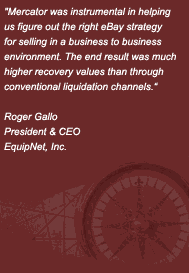|
By David Wolf, 5/5/2002
With vote counts and lawsuits behind them, it looks like the new HP-Compaq will launch this week. In case you think the hard part is over, think again. Getting the deal done is only half the battle. Melding the two companies, maintaining product and sales momentum, and capturing expected, postmerger synergies is the real trick.
Fortunately it looks like HP has done a lot that's right when it comes to completing a successful integration:
It's clear who's in charge. One of the great lies in the M&A world is "this is a merger of equals." There aren't many true mergers of equals and the ones that try rarely live up to their potential. In this deal, there was never any doubt. HP is buying Compaq and Carly Fiorina is the CEO. It may have been a blow to the egos of Compaq employees the first time they heard it, but they got over it. The clarity of direction that comes from having clear leadership is inestimable.
They got started early. Many companies treat acquisition integration as a separate and discreet phase of the deal, usually kicked off at the closing. HP viewed integration as a process that began with due diligence. By getting the integration team involved early in the process, key financial assumptions are verified against the operational realities and costly surprises can be avoided. Most important, key personnel decisions have been made in advance of the closing, so the combined entity can hit the ground running once the deal is done.
They provided adequate resources. Everybody underestimates the amount of effort it takes to get an integration right. HP and Compaq have developed a structured integration methodology and staffed the integration with 900 people, from fully dedicated employees to outside consultants. HP dedicated one of its most senior managers, full time, to lead the integration.
Clear statement of strategic direction. In hindsight, it was probably the proxy fight that forced the issue, but HP has clearly communicated its direction. There is little doubt as to which company's product lines the combined entity intends to support and which are dead. HP has clearly articulated a plan for taking a leadership position in several key areas and a clear product road map for customers to follow as they make decisions about whether to stick with HP-Compaq products in a time of uncertainty.
Unfortunately, there is plenty that can still go wrong. Researchers believe that at least 50 percent - and as many as 80 percent - of acquisitions fail to achieve the cost savings and earnings momentum that were originally planned.
History is against them. Wall Street is littered with the refuse of tech-based company mergers that have failed. While sometimes the problems are based on bad financial engineering or strategic errors, unsuccessful mergers are more often caused by culture clashes, poor communication, and the challenges of integrating overlapping product lines, sales forces, and management.
Execution risk. The HP-Compaq combination presents higher-than-normal execution risk due to its complexity and the companies' respective positions in the marketplace. The combined entity will be number one in Windows servers, enterprise storage, printers, and PCs. To maintain this leadership, HP must make smooth product transitions and settle down its customers, while continuing to drive costs out of the brutally competitive PC business. HP will be a distant second to IBM in the IT services space, an area in which size counts. Finally, the company must integrate two sales forces that have been selling against one another, in the same territories, to the same customers, for years.
Both HP and Compaq have justified the merger as a way to continue to compete and innovate in an increasingly competitive world. By becoming the market share leader in key IT areas, the company will have the budget and clout to exploit its leadership position. Moreover, the integration plan outlines compelling economic benefits including increased margins and savings from the consolidation of facilities, elimination of redundant functions, and other synergies.
In time we will all know whether market position is exploited and synergies are realized in a successful merger, or whether market leadership and synergies evaporate as customers and employees move on to avoid the uncertainties and pain created by a bungled integration.
David Wolf is a managing director of the Mercator Group, a Boston-based management consulting company that offers business advisory and M&A services to emerging and middle market technology companies.
This story ran on page H3 of the Boston Globe on 5/5/2002.
© Copyright 2002 Globe Newspaper Company.
|
